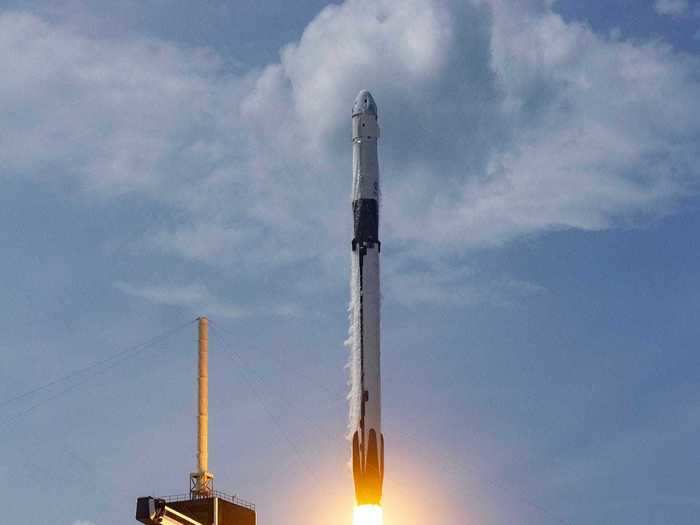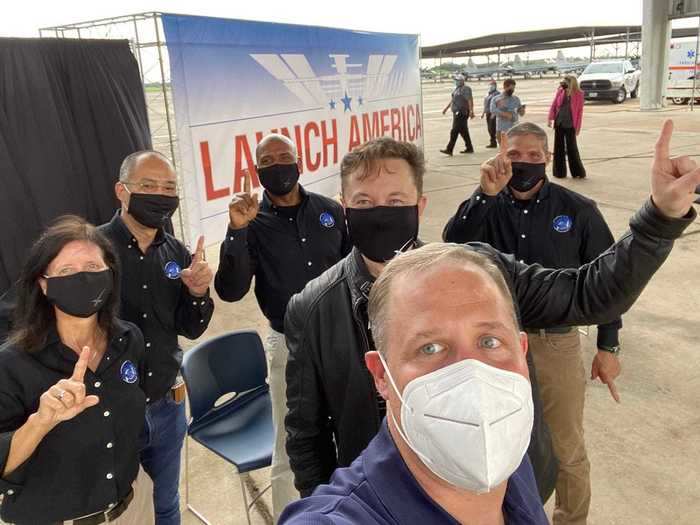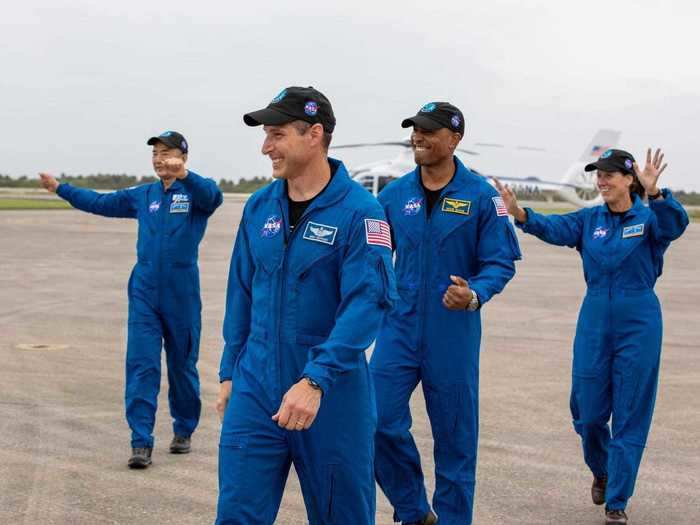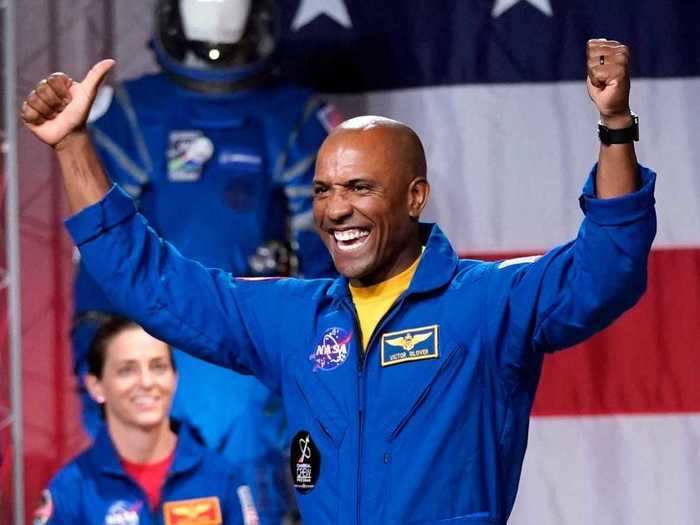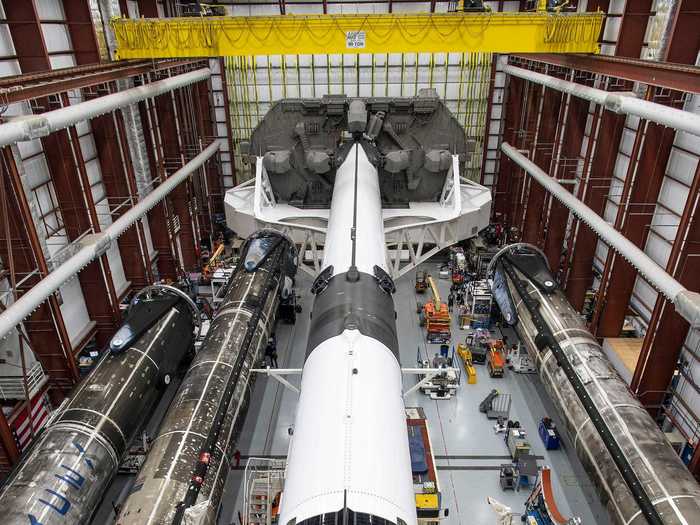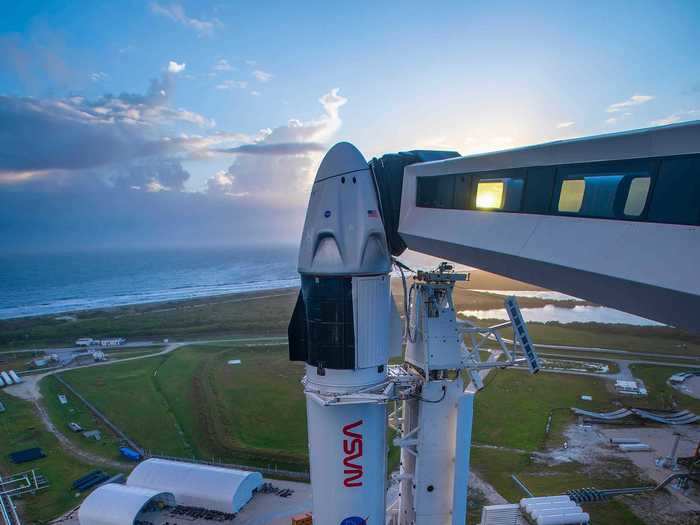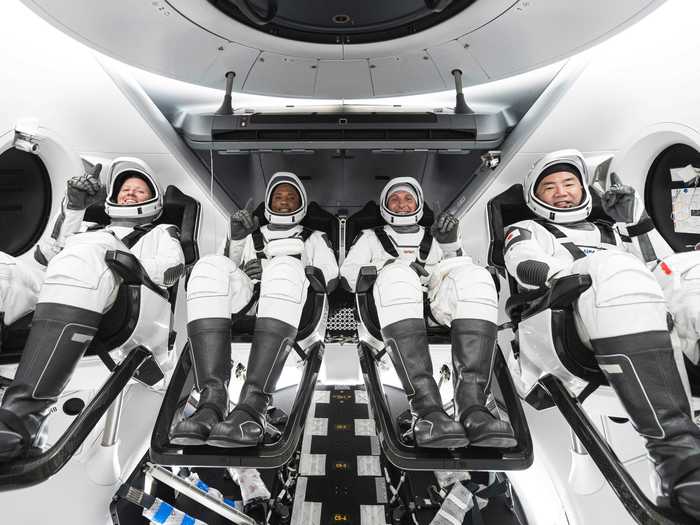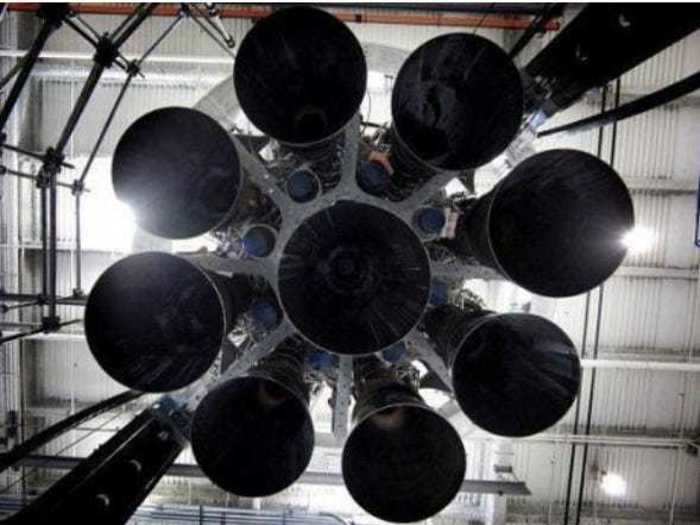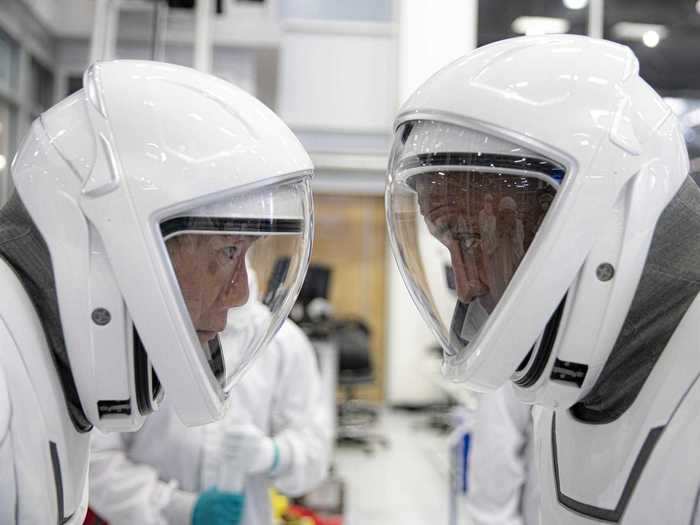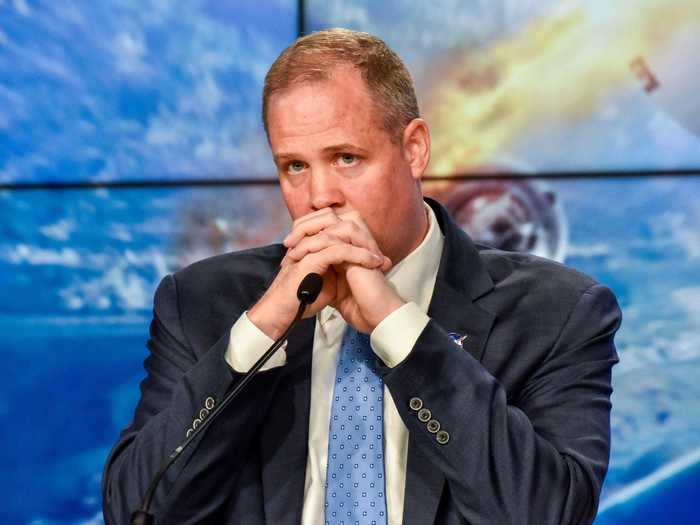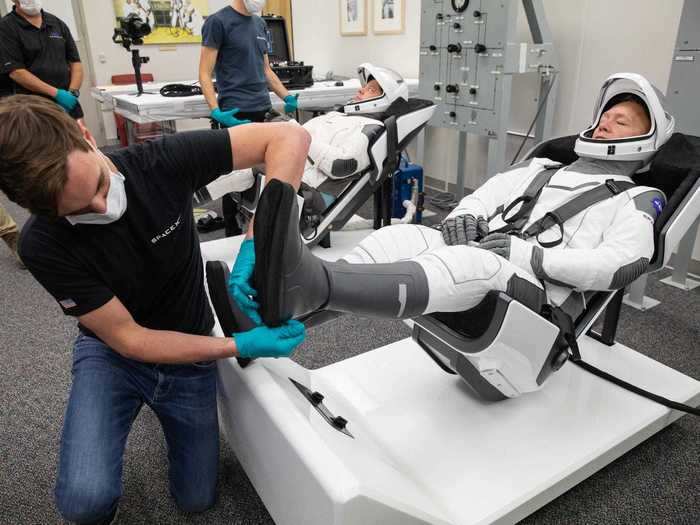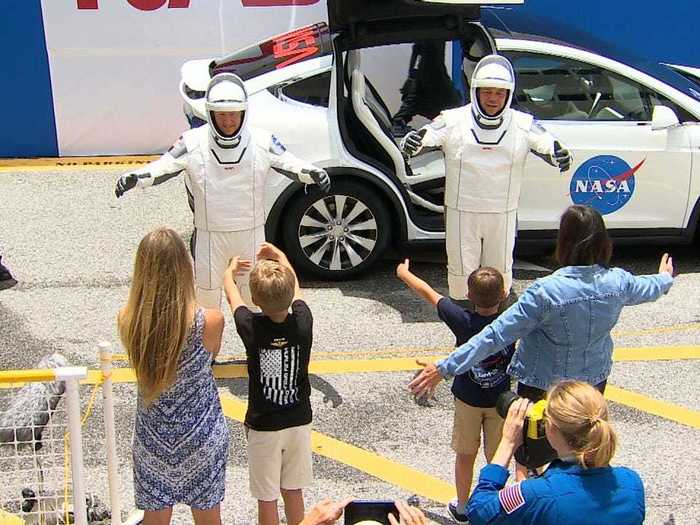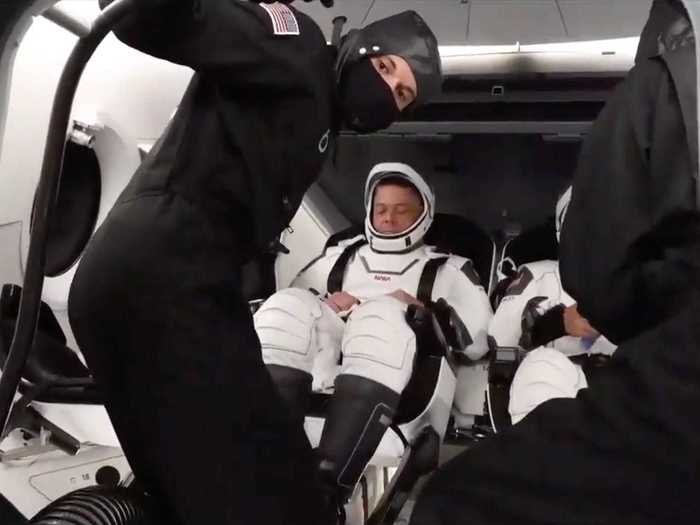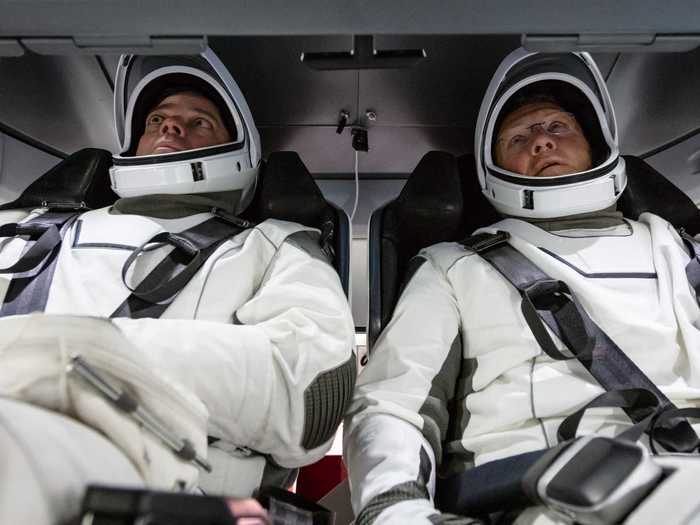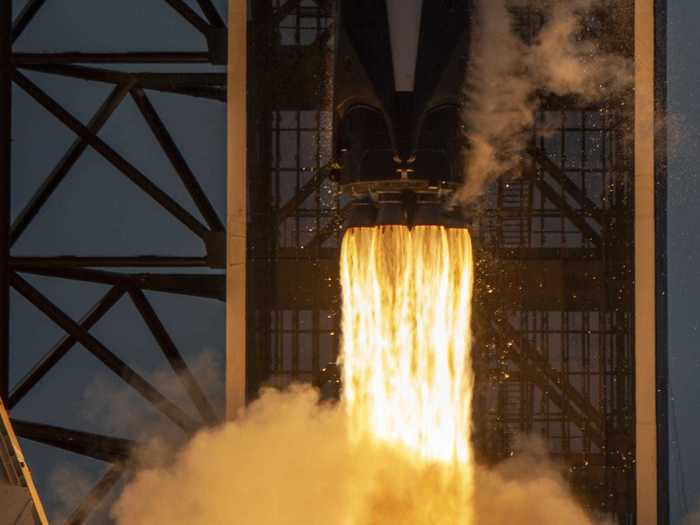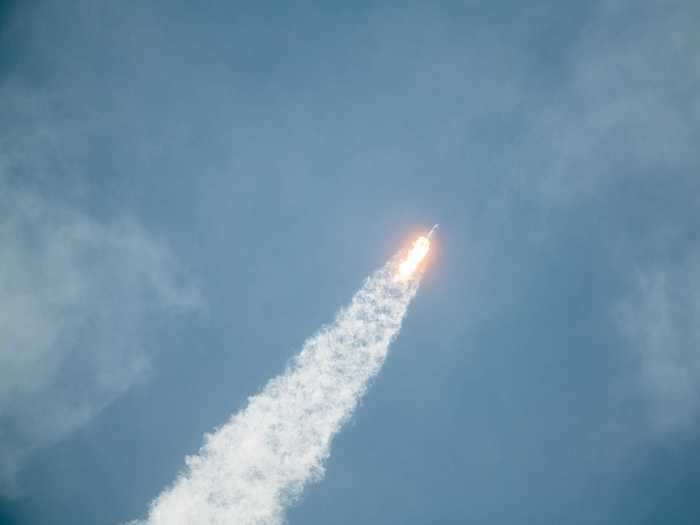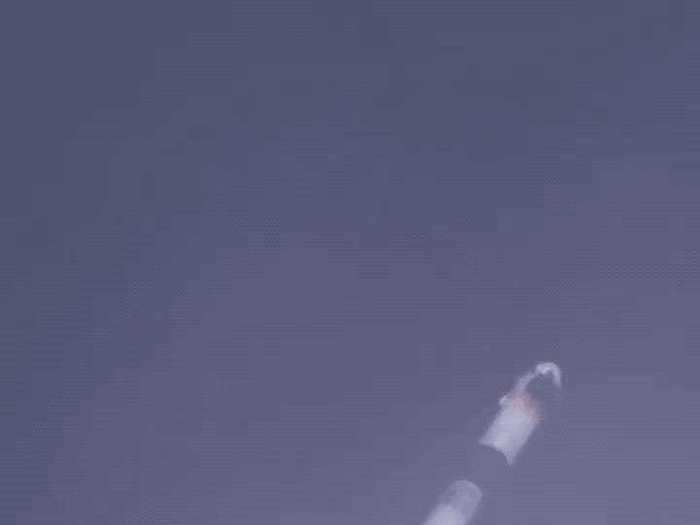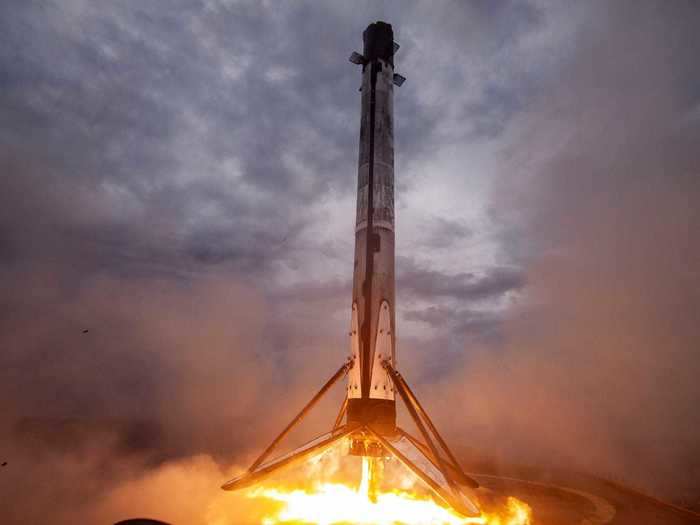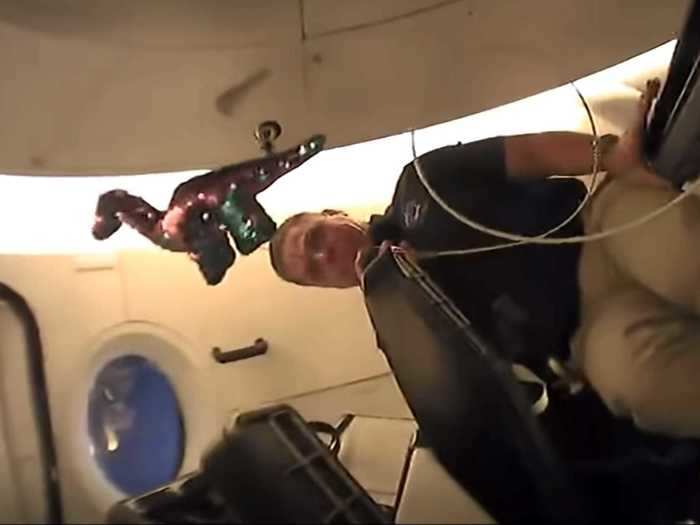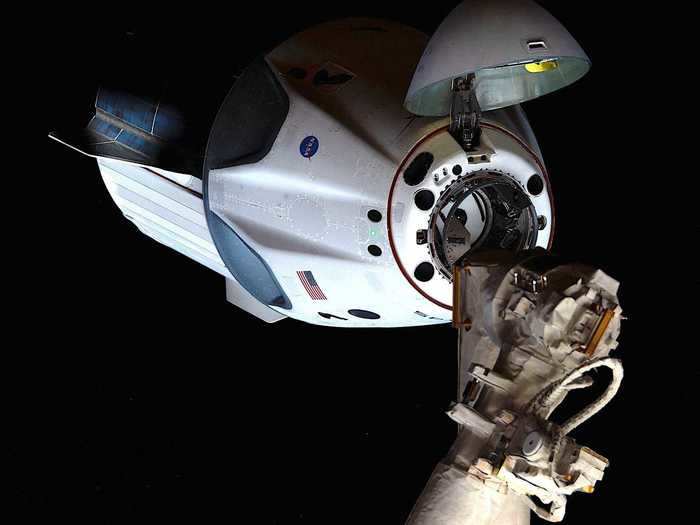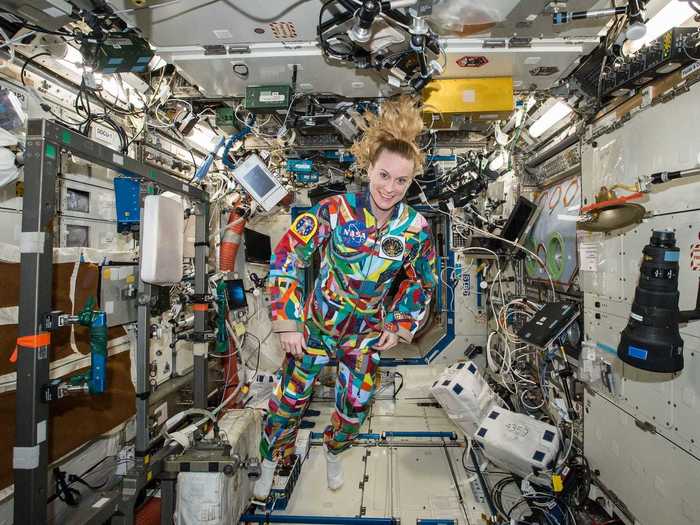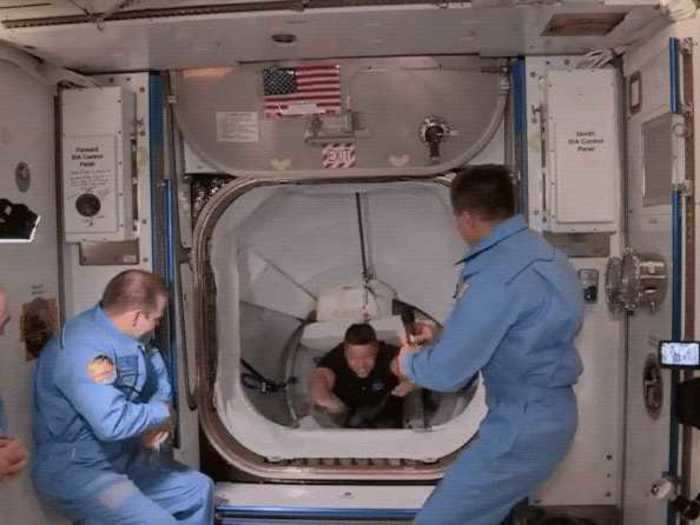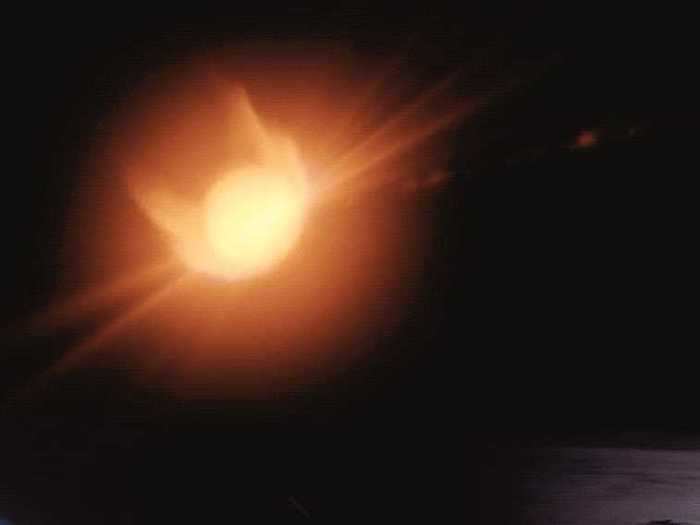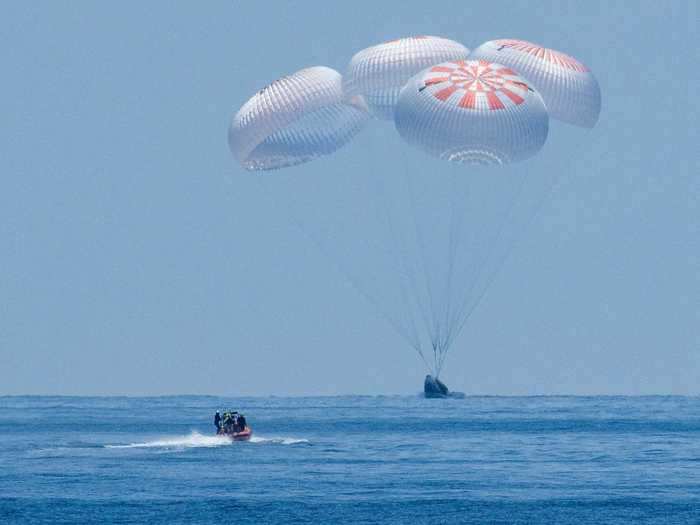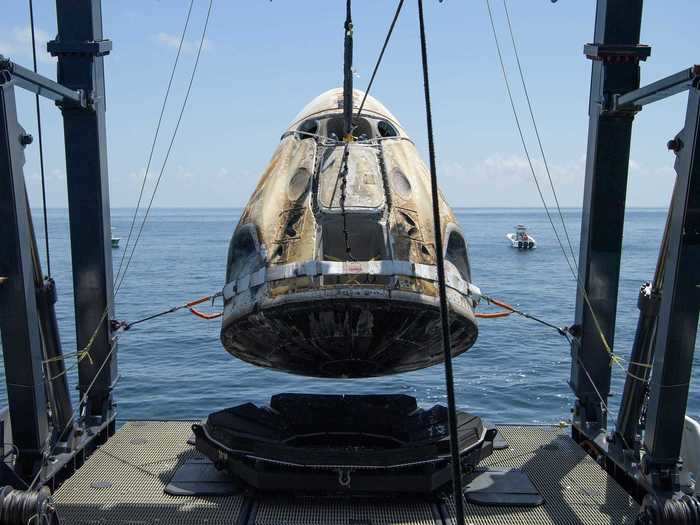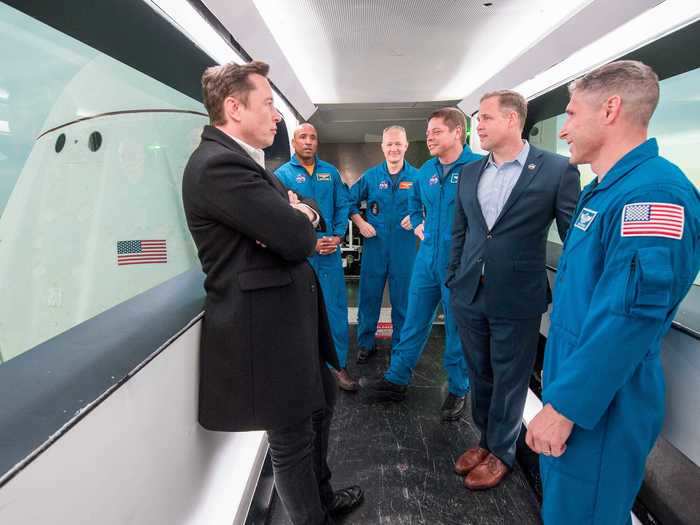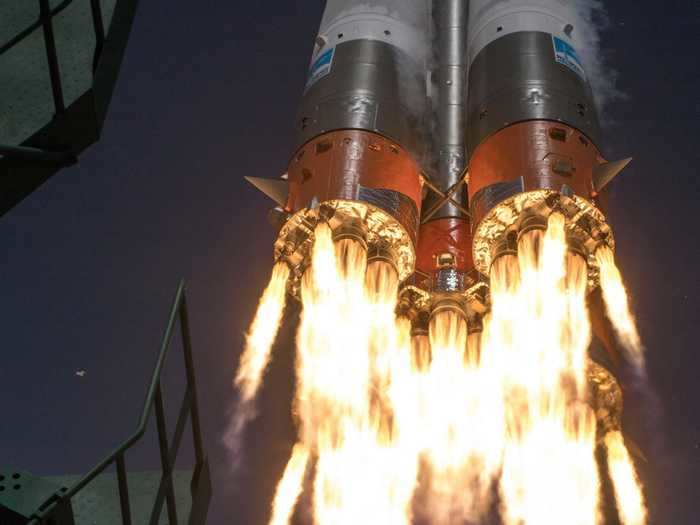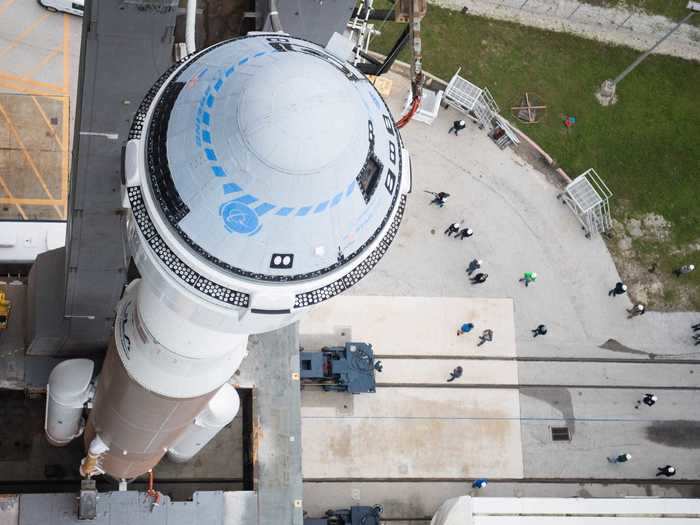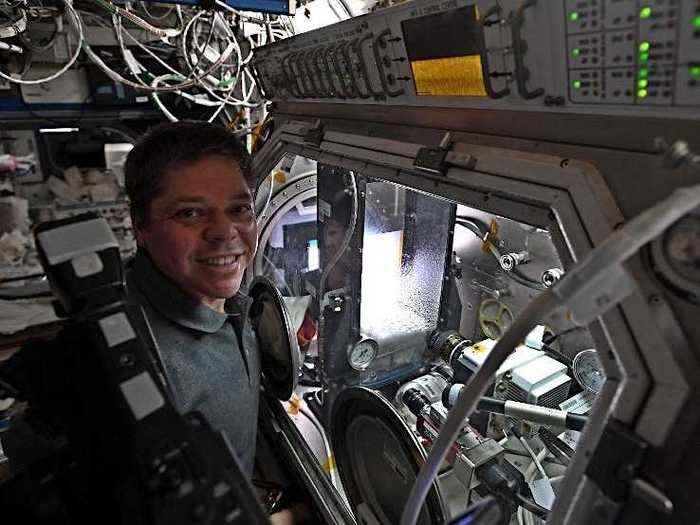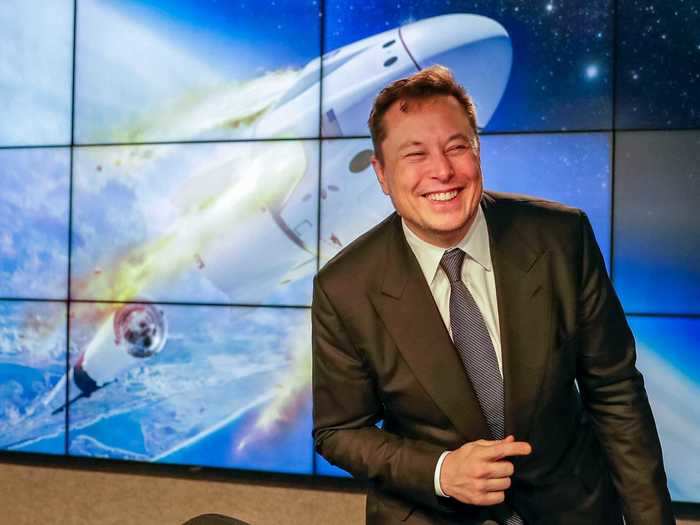SpaceX's Crew-1 mission for NASA will fly (from left) astronauts Mike Hopkins, Soichi Noguchi, Shannon Walker, and Victor Glover to orbit aboard a Crew Dragon spaceship.SpaceX; NASA; Samantha Lee/Business Insider
- SpaceX's Crew-1 mission is set to launch from the Kennedy Space Center at 7:49 p.m. ET on Saturday, rocketing four astronauts into space.
- It's the first full-length mission NASA has contracted from Elon Musk's company, and NASA's first full-length commercial space mission overall.
- Crew-1 will also be the longest-duration human spaceflight mission ever launched from US soil.
- Here's what to expect as SpaceX's Crew Dragon spaceship flies to orbit and back.
SpaceX is about to launch its most important NASA mission yet: On Saturday, Elon Musk's rocket company is slated to send four astronauts to the International Space Station on its Crew Dragon spaceship.
Crew-1, as the flight is called, will be SpaceX's first full-length mission for NASA. It's also the company's second time launching people and the longest-duration human space mission ever launched from US soil. The current record, 84 days, has held since the longest Skylab mission more than 45 years ago.
Once the crew members dock to the ISS, they're expected to stay aboard the floating laboratory for about half a year.
"We are ready for this launch. We are ready for the six months of work that is waiting for us on board the International Space Station, and we are ready for the return," NASA astronaut Mike Hopkins, who will command the mission, told reporters during a pre-mission news conference.
NASA said Tuesday that after analyzing flight data from SpaceX's Demo-2 mission earlier this year, the company's launch system had finally ticked off the last requirements to be fully certify for routine use by NASA astronauts. That approval was the culmination of nearly a decade of funding and work in NASA's partnership with SpaceX.
Hopkins and his fellow crew members — NASA astronauts Victor Glover and Shannon Walker, as well as Japanese Aerospace Agency astronaut Soichi Noguchi — are scheduled to lift off at 7:49 p.m. ET on Saturday.
Here's how their flight should play out and what to expect at each stage of the mission.
On Saturday, SpaceX's Falcon 9 rocket is expected to blast off with its Crew Dragon spaceship on top.
SpaceX's Demo-2 mission, launched with a Falcon 9 rocket, lifts off with NASA astronauts Bob Behnken and Doug Hurley inside a Crew Dragon spaceship on May 30, 2020.
SpaceX
The rocket will launch from the Kennedy Space Center in Cape Canaveral, Florida.
The Crew-1 mission is the first of six round-trip astronaut flights that NASA has contracted from SpaceX.
From top left: Shannon Walker, Soichi Noguchi, Victor Glover, and Mike Hopkins pose with SpaceX founder Elon Musk and NASA Administrator Jim Bridenstine.
Jim Bridenstine/NASA
The flights mark NASA's return to human spaceflight after the gap created when the Space Shuttle Program ended in 2011.
The astronauts arrived in Cape Canaveral on Sunday, where they busied themselves with pre-launch preparations.
The Crew-1 astronauts arrive at NASA's Kennedy Space Center on November 8, 2020.
NASA/Kim Shiflett
"The nerves start to really pile on as you get closer to launch," Hopkins said.
But the rehearsals, briefings, and reviews make a welcome distraction, he added: "I think that helps keep the nerves down a little bit as well, because you're just kind of going like clockwork through the procedure and the timeline."
This will be Glover's first spaceflight. "I really look forward to every single bit of it," he told Business Insider. "Every time I do something in space, it will be the first time."
Victor Glover raises his hands after being selected by NASA to fly on the second crewed mission of SpaceX's Crew Dragon spaceship, August 3, 2018.
David J. Phillip/AP
"I did not imagine that I would get to do what I'm doing," he added. "To be the pilot of this spacecraft is just such an honor and responsibility."
The Crew Dragon arrived at the Kennedy Space Center three days before the astronauts. Then it was secured on top of the Falcon 9 rocket.
The Crew Dragon Resilience and its Falcon 9 rocket in the SpaceX hangar at NASA’s Kennedy Space Center in Florida on November 9, 2020,
SpaceX
The reusable, two-stage rocket is 230 feet tall and weighs over 1.2 million pounds.
The whole thing was rolled onto the launchpad and lifted into a vertical position on Monday night and Tuesday morning.
The Resilience Crew Dragon capsule sits atop the Falcon 9 rocket at Launch Complex 39A on November 10, 2020.
SpaceX via Twitter
The launchpad's crew access arm is where the astronauts will go to climb into the Crew Dragon on launch day.
NASA's official certification of SpaceX's launch system — including its Falcon 9 rocket and Crew Dragon spaceship — came after the completion of a two-day flight-readiness review.
The Crew-1 astronauts sit inside the Crew Dragon during training. From left: Shannon Walker, Victor Glover, Mike Hopkins, and Soichi Noguchi.
SpaceX via NASA
But the space company has been working on the launch system for nearly a decade, initially with no government funding. Its earliest Falcon 9 rocket prototype, known as Grasshopper, began test flights in 2012.
NASA's approval kicked off a series of preparations for Saturday's launch, including a static-fire test on Wednesday.
The Falcon 9 is powered by nine Merlin engines.
NASA
For static fire, SpaceX pumped super-chilled liquid oxygen and kerosene fuel into the rocket's tanks. Then it fired the rocket booster's nine Merlin engines for seven seconds to ensure there were no problems.
The astronauts and support teams carried out a dress rehearsal on Thursday.
Noguchi and Glover participate in testing at SpaceX headquarters in Hawthorne, California, on September 24, 2020.
SpaceX
Hopkins, Glover, Walker, and Noguchi suited up and drove out to the launchpad to practice boarding the Crew Dragon.
NASA and SpaceX will convene one last time on Friday to review everything before signing off on the launch attempt.
NASA Administrator Jim Bridenstine speaks after the Crew Dragon in-flight abort test at the Kennedy Space Center in Florida, January 19, 2020.
Steve Nesius/Reuters
The agency plans to go over any last-minute items to ensure the mission is ok to lift off, then announce its decision the same day.
If NASA gives the green light, things will proceed much like SpaceX's first astronaut launch, called Demo-2.
NASA astronauts Doug Hurley (foreground) and Bob Behnken don SpaceX spacesuits during a dress rehearsal at Kennedy Space Center in Florida on January 17, 2020
NASA/Kim Shiflett
That mission rocketed NASA astronauts Bob Behnken and Doug Hurley to the ISS on a Crew Dragon capsule.
On launch day, the astronauts will get suited up, say goodbye to their families, and drive to the launchpad in Teslas.
Hurley and Behnken say goodbye to their families and give distant "hugs," May 27, 2020.
NASA TV
"I think my family is excited. And that's exciting for me, because my goal in this entire endeavor was to make sure that it continued to be a family adventure," Glover said on a NASA podcast in October.
They'll take an elevator up to the crew access arm, then climb into Crew Dragon.
Behnken and Hurley are strapped into their seats on the Crew Dragon, May 27, 2020.
NASA via Youtube
A team will help strap the crew members into their seats.
Then the astronauts will wait for the rocket to be filled with fuel — perhaps the longest 35 minutes of their lives.
NASA astronauts Doug Hurley and Bob Behnken familiarize themselves with SpaceX's Crew Dragon spaceship, August 3, 2018.
SpaceX
Behnken and Hurley said there's a distinct rumble once the rocket is full, Noguchi told reporters on Monday.
"I'm really anxious to feel that vibration," he said.
Once it's fueled — if everything goes according to plan — the Falcon 9's Merlin engines will roar to life and spew fire and smoke, heaving the rocket off the launchpad.
A SpaceX Falcon 9 rocket, carrying astronauts Bob Behnken and Doug Hurley, launches from NASA’s Kennedy Space Center for the Demo-2 mission, May 30, 2020.
NASA/Bill Ingalls
Lift-off is instantaneous, meaning it must occur at the precise second it's scheduled. Waiting any longer would allow the ultracold propellant to warm up, expand, and boil off — and fuel loss increases the risk of a dangerous rocket failure. So if there's any delay, SpaceX will have to try again another day.
The force of the launch will press the astronauts into their seats as the Falcon 9 spends the next nine minutes accelerating Crew Dragon to 17,500 mph.
SpaceX's Falcon 9 rocket launches the Crew Dragon with NASA astronauts Bob Behnken and Doug Hurley onboard, May 30, 2020.
SpaceX via Getty Images
That's about 10 times as fast as a bullet, and the speed required to orbit (or endlessly freefall around) Earth at the space station's altitude.
If there's a major problem with the rocket en route to orbit, an escape system is designed to automatically pull Crew Dragon to safety.
SpaceX's Crew Dragon spaceship separates from an intentionally failing Falcon 9 rocket in a demonstration test on January 19, 2020.
SpaceX via Twitter
Once the Falcon 9 rocket booster expends most of its fuel, it will detach from the upper stage and attempt to land itself on a boat at sea. That way, it can be reused to fly another day.
The Falcon 9 booster lands on a ship after launching the Demo-2 mission into space, May 30, 2020.
SpaceX
Once in orbit, the astronauts will have about 8 hours and 30 minutes to roam the Crew Dragon's cabin.
Bob Behnken and "Tremor," the sequined dinosaur plushie that traveled aboard the Crew Dragon during the Demo-2 mission, May 30, 2020.
NASA TV
They will probably try to get some sleep for the big day ahead.
Early Sunday morning, the Crew Dragon capsule should edge close to the ISS.
The Crew Dragon docks to the International Space Station, May 31, 2020.
Chris Cassidy
SpaceX and NASA expect the Crew Dragon to perform a series of automated maneuvers to dock to the station around 4:20 a.m. ET.
After docking, Kate Rubins, the NASA astronaut currently on the ISS, will greet the new crew.
NASA Astronaut Kate Rubins on the ISS.
NASA
"I have some great friends flying on that vehicle, so I'm going to be pretty happy to open the hatch and welcome them to the space station," she told Business Insider.
Russian cosmonauts Sergey Ryzhikov and Sergey Kud-Sverchkov will also be in tow to welcome Crew-1 to the football-field-size laboratory.
The new arrivals will live and work on the station for a full rotation of about six months. The Crew Dragon will stay docked the entire time.
NASA astronauts Bob Behnken and Doug Hurley float into the International Space Station on May 31, 2020, after riding SpaceX's Crew Dragon to the orbiting laboratory.
NASA
That will make Crew-1 the longest human spaceflight the US has ever launched. Russia's Soyuz missions have regularly achieved such mission durations for decades.
Behnken and Hurley, by contrast, only stayed for two months. But new upgrades will allow the Crew Dragon to stay in orbit for up to 210 days without its solar panels degrading in the harsh environment of space.
Eventually, the Crew-1 astronauts will climb back inside the Crew Dragon then return to Earth.
An illustration of SpaceX's Crew Dragon spaceship returning to Earth with a blaze of plasma ahead of its heat shield.
SpaceX via YouTube
As it plows through the atmosphere, the spaceship's heat shield should deflect and absorb superheated plasma that can reach 3,500 degrees Fahrenheit.
"It felt like we were inside of an animal," Behnken said of the Crew Dragon's 17,500 mph dive.
If all goes well, the capsule will deploy its parachutes and gently splash into the ocean.
SpaceX's Demo-2 mission splashes down in the Gulf of Mexico with NASA astronauts Bob Behnken and Doug Hurley on August 2, 2020.
Bill Ingalls/NASA
SpaceX and NASA are targeting either the Atlantic Ocean or the Gulf of Mexico off Florida's coast or for the Crew-1 splashdown.
Once the Crew Dragon capsule is bobbing in the water, recovery boats will drive out to greet them.
The SpaceX GO Navigator recovery ship lifts the Crew Dragon capsule Endeavour out of the Gulf of Mexico, August 2, 2020.
NASA/Bill Ingalls
Following Demo-2's splashdown in August, hordes of onlookers in motorboats swarmed the capsule, alarming mission managers and the US Coast Guard.
"Numerous boaters ignored the Coast Guard crews' requests and decided to encroach the area, putting themselves and those involved in the operation in potential danger," the Coast Guard said in a statement to CBS on August 2.
Bridenstine pledged that NASA would "do a better job" of clearing boats for future water landings, including Crew-1's.
Crew-1 is the fruit of NASA's Commercial Crew Program, which the Obama administration funded in 2010 to restore the agency's human spaceflight capabilities through partnerships with companies.
From left: SpaceX founder Elon Musk, astronauts Victor Glover, Doug Hurley, Bob Behnken, NASA Administrator Jim Bridenstine, and astronaut Mike Hopkins inside the crew access arm at Launch Complex 39A.
Joel Kowsky/NASA
Since the Space Shuttle program ended in 2011, NASA had been relying on Russian Soyuz rockets to transport its astronauts.
A Soyuz rocket launches with an astronaut crew bound for the ISS, from the launchpad at the Baikonur Cosmodrome, Kazakhstan, April 9, 2020.
Roscosmos via Reuters
Soyuz has been the only option for the world's space agencies for nearly a decade. NASA opted to fund commercial spaceflight programs in order to provide more alternatives.
What's more, Soyuz has gotten increasingly expensive. One seat can cost up to $90 million. A seat on Crew Dragon, meanwhile, is projected to cost $55 million(though that does not count the funding NASA dished out to develop the spaceship).
The Commercial Crew Program is also funding the development of a new spaceship from Boeing, the CST-100 Starliner.
Boeing's CST-100 Starliner space capsule stands atop an Atlas V rocket in Cape Canaveral, Florida.
NASA
The company has launched an uncrewed test mission of that capsule, but a software error caused a clock misalignment and the spaceship was unable to dock with the ISS.
Boeing plans to launch a follow-up, uncrewed Starliner demo in early 2021. Its first crewed flight won't happen until later that year.
Shuttling more NASA astronauts to the ISS will allow the US to do more research in space. "I think they're going to keep us pretty busy," Hopkins said during the press call.
Behnken conducts an experiment on water droplet formation in microgravity, testing a water-conserving showerhead technology in July, 2020.
NASA
"It's going to be exciting to see how much work we're going to be able to get done while we're there," Hopkins added.
But the space station might end up with more astronauts than it has bedrooms. So Hopkins might sleep inside the Crew Dragon capsule.
With the Crew-1 mission, SpaceX hopes to prove that its spaceflight capabilities rival those of government-led programs – further cementing its leadership in the industry.
Elon Musk, the founder and CEO of SpaceX, speaks during a news conference on January 19, 2020.
John Raoux/AP Photo
SpaceX leads the pack of commercial enterprises supported by NASA. The agency is shifting away from its role as mission controller to become a paying customer.
"NASA's partnership with American private industry is changing the arc of human spaceflight history," Phil McAlister, director of commercial spaceflight development at NASA, said on Tuesday. "We are truly in the beginning of a new era of human spaceflight."

